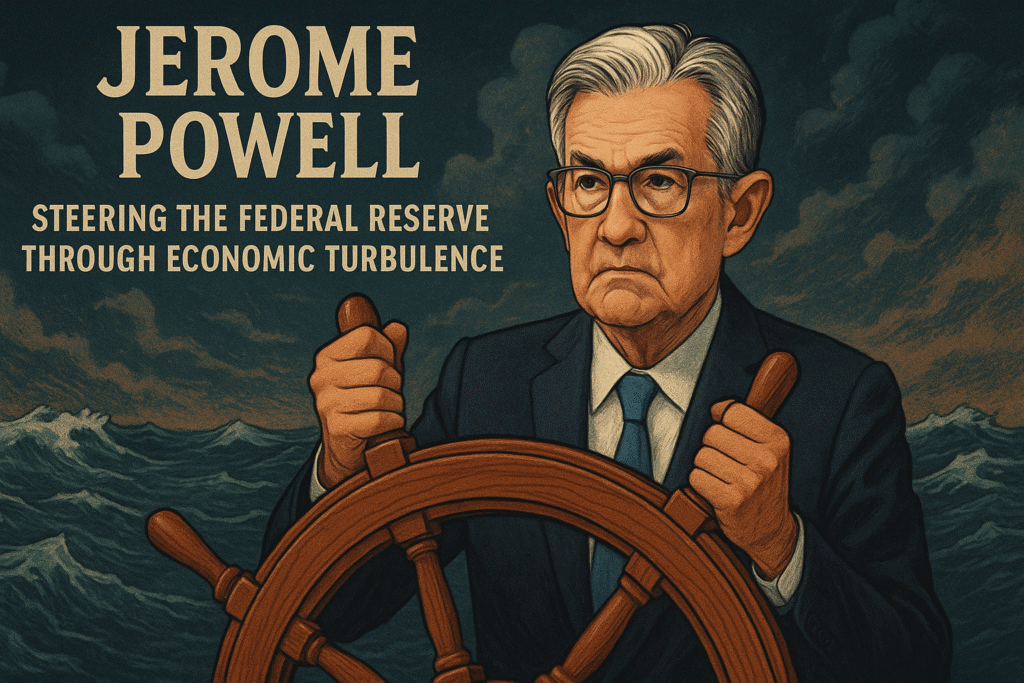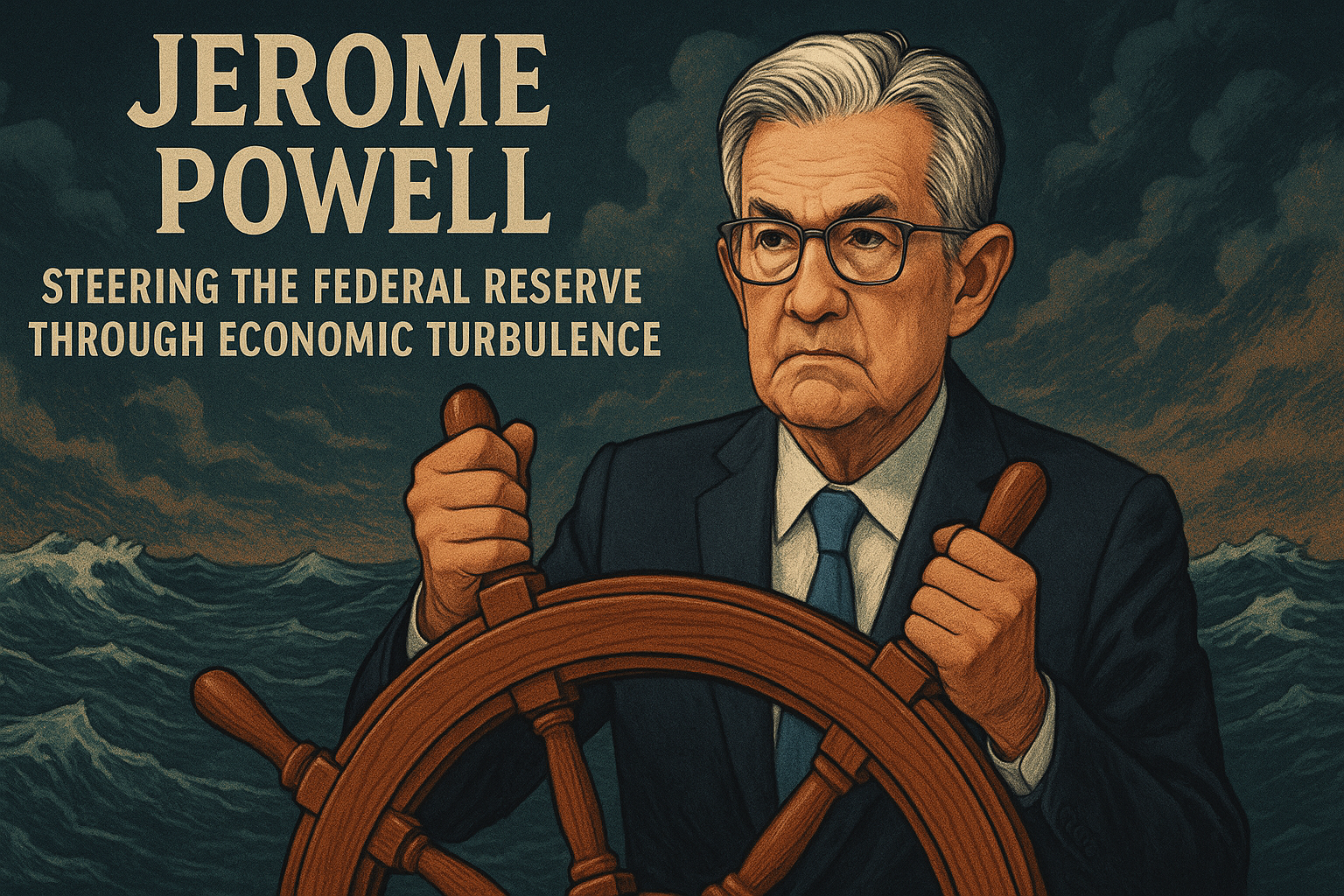Jerome Hayden “Jay” Powell, born on February 4, 1953, in Washington, D.C., has been a pivotal figure in American economic policy as the 16th Chair of the Federal Reserve, serving since 2018. His tenure has been marked by navigating unprecedented challenges, from the COVID-19 pandemic to persistent inflationary pressures, all while maintaining the Fed’s dual mandate of price stability and maximum employment.
Powell’s pragmatic approach, rooted in his background as a lawyer and investment banker rather than an economist, has shaped his leadership style, earning him both praise and criticism. This article explores Powell’s career, policies, and impact on the U.S. economy, offering insights into why his actions resonate in financial markets and beyond.

Early Life and Career
Powell’s journey to the Federal Reserve began in Washington, D.C., where he was born to Patricia and Jerome Powell Sr., a private practice lawyer. One of six siblings, Powell attended Georgetown Preparatory School, a prestigious Jesuit institution, before earning a Bachelor of Arts in political science from Princeton University in 1975.
His senior thesis, “South Africa: Forces for Change,” hinted at his early interest in systemic issues. He later graduated from Georgetown University Law Center in 1979, serving as editor of the Georgetown Law Journal.
After practicing law briefly, Powell transitioned to investment banking in the 1980s, working at Dillon, Read & Co. and later as a partner at the Carlyle Group. His financial acumen led to a brief stint in public service under President George H.W. Bush, serving as Under Secretary of the Treasury for Domestic Finance in 1992.
Powell returned to the private sector, founding Severn Capital Partners and serving as a visiting scholar at the Bipartisan Policy Center, before re-entering public service in 2012 when President Barack Obama nominated him to the Federal Reserve Board of Governors.
Federal Reserve Leadership
Appointed Fed Chair by President Donald Trump in 2018, succeeding Janet Yellen, Powell inherited a robust economy but faced immediate scrutiny. Unlike his predecessors, who were economists, Powell’s legal and financial background brought a practical, consensus-driven approach to monetary policy.
His tenure has been defined by three major challenges: the COVID-19 economic crisis, the 2021–2023 inflation surge, and ongoing tensions with political leaders, particularly Trump.
COVID-19 Response
In early 2020, as the pandemic crippled global economies, Powell spearheaded aggressive monetary interventions. Leveraging the Dodd-Frank Act, the Fed slashed interest rates to near zero, introduced emergency loan programs, and purchased corporate debt to stabilize markets.
These actions earned bipartisan praise for preventing a deeper recession, though critics warned of long-term risks like inflation and wealth inequality. Powell’s ability to act decisively while maintaining bipartisan support underscored his reputation as a consensus-builder, a trait honed during his time in Washington under Obama.
Inflation and Policy Shifts
The 2021–2023 inflation surge, with the Consumer Price Index (CPI) reaching 7% in December 2021, tested Powell’s leadership. Initially, he described inflation as “transitory,” attributing it to supply chain disruptions and pent-up demand. By late 2021, he retired the term, acknowledging persistent price pressures.
The Fed accelerated the tapering of asset purchases, ending its quantitative easing program earlier than planned, and raised interest rates starting in March 2022 to combat inflation, which hit a 40-year high of 6.8% in November 2021. Powell’s pivot from dovish to hawkish policy drew mixed reactions: supporters praised his adaptability, while critics, including Trump, argued rate hikes stifled growth.
Political Tensions
Powell’s tenure has been marked by friction with Trump, who appointed him but later criticized his rate hikes, calling him a “stubborn mule” and even suggesting his replacement. In 2025, Trump escalated pressure, demanding lower rates to offset tariff-driven inflation, which Powell cautiously labeled as potentially “transitory.”
Despite these attacks, Powell has emphasized the Fed’s independence, stressing that decisions are data-driven, not politically motivated. His ability to navigate these tensions while maintaining market confidence highlights his diplomatic skill.
Impact on Financial Markets
Powell’s words and actions carry immense weight, often moving markets. In 2018, his comment that interest rates were “just below” neutral sparked a 2.3% stock market surge, reversing earlier concerns about aggressive hikes. Conversely, his 2023 insistence on “higher for longer” rates tempered market optimism.
A JP Morgan analysis suggests Powell’s dovish rhetoric often contrasts with the Fed’s hawkish actions, creating volatility as investors misinterpret his tone. For instance, bond yields fell after six of nine FOMC press conferences since July 2023, despite tighter policy, reflecting the market’s sensitivity to his language.
Legacy and Ongoing Challenges
Powell’s legacy hinges on his ability to balance inflation control with economic growth. His 2020 focus on maximum employment over strict inflation targets reshaped the Fed’s approach, prioritizing inclusivity and labor market strength.
However, critics argue his initial missteps on inflation and rate hikes in 2018 slowed economic momentum. As of July 2025, with Trump’s tariffs looming and inflation projections rising, Powell faces a delicate task. His base case—that tariff-driven inflation may be transitory—echoes past miscalculations, but he insists the Fed will adapt based on data.
Powell’s tenure reflects a blend of pragmatism and resilience. Whether navigating pandemics, inflation, or political pressure, he has sought to uphold the Fed’s independence while fostering economic stability. As markets watch his every move, Powell remains a central figure in shaping America’s economic future, proving that in the high-stakes world of monetary policy, actions often speak louder than words.
